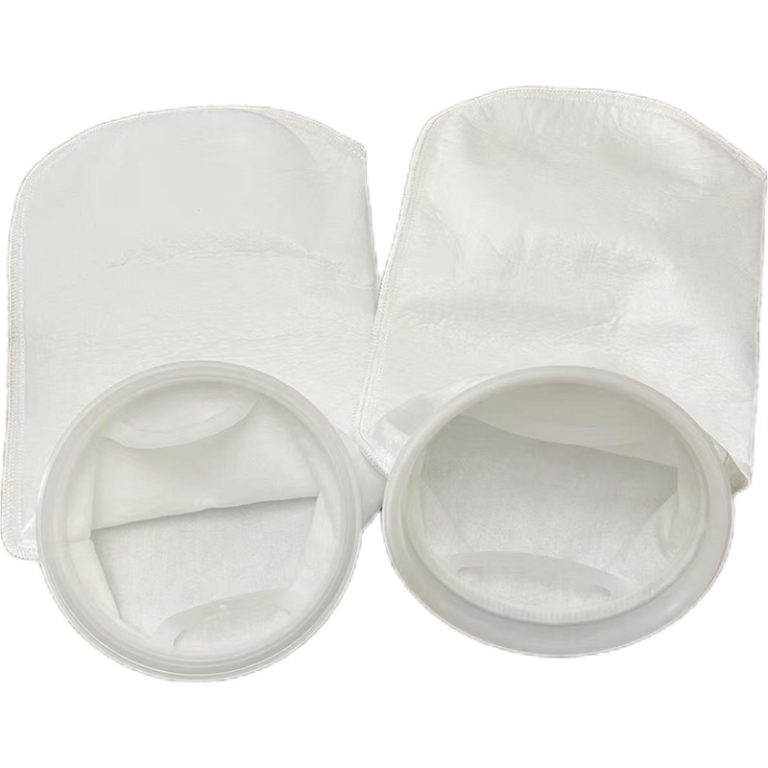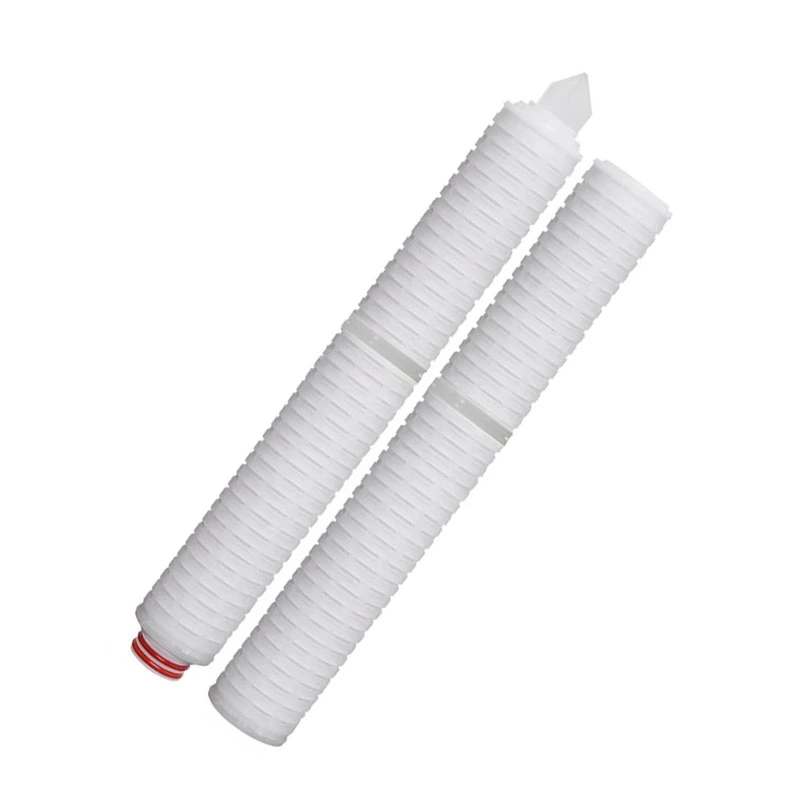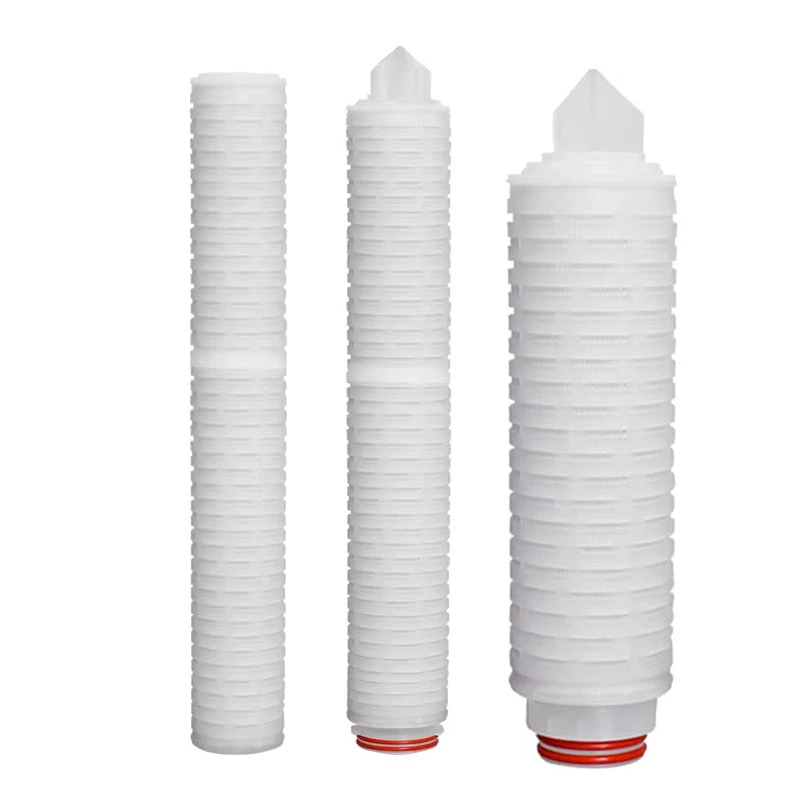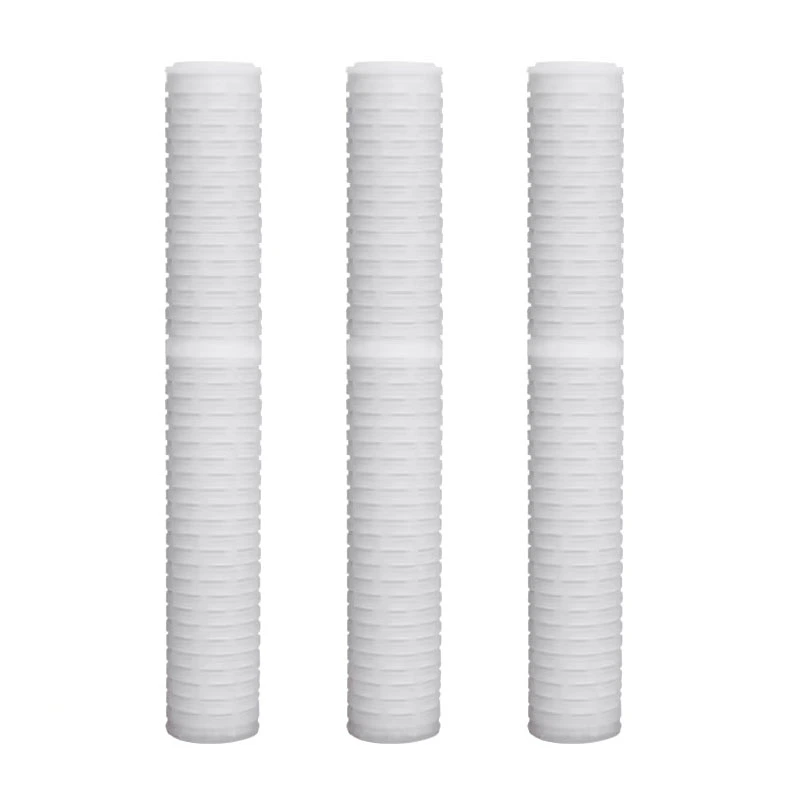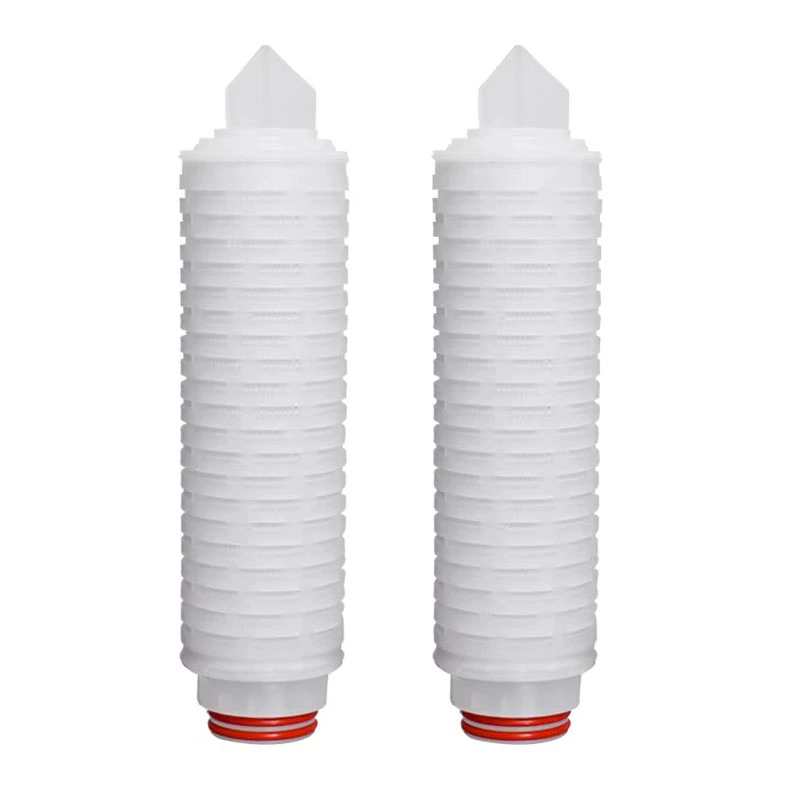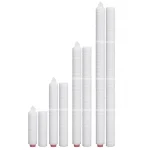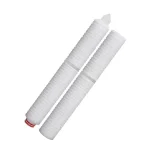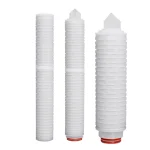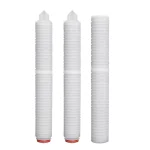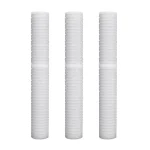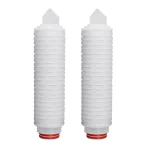BasideWT- Whole Home Water Filtration System & Replacement

10” 20” 30” 40” PP Pleated Water Filter Cartridge 20 Micron 0.2 Micron 0.5 Micron Cartridge Filter For Ro Plant
PRODUCT PARAMETERS
- Product Name: PP Pleated Filter Cartridge
- Filtration precision: 0.1/0.22/0.45/1/5/10um
- Size: 10'' 20'' 30'' 40''
- Material: Food Grade Polypropylene
- Type: Reverse Osmosis
- Applications:Water Treatment System
- Features: Water Purification
- Packing: Standard Exportation Package
What Is a PP Pleated Water Filter Cartridge?
A PP pleated water filter cartridge is a high-performance filtration solution made from polypropylene (PP) with a pleated design. Unlike standard spun filters, its accordion-like structure provides 10x more surface area, allowing for longer lifespan, higher dirt-holding capacity, and better flow rates.
These cartridges are widely used in:
✔ RO plants (as pre-filters) ,Industrial water treatment,Household drinking water systems
Key benefit: They trap particles as small as 0.2 microns (bacteria-sized) while maintaining strong water pressure.
Why Choose a Pleated Design Over Standard Filters?
✅ Longer Lifespan
Pleated filters last 3-6 months, while standard spun filters clog in 1-2 months under similar conditions.
✅ Higher Dirt Capacity
The pleats capture more sediment before needing replacement—ideal for high-turbidity water.
✅ Better Flow Rate
Unlike compressed filters, pleated designs reduce pressure drop, maintaining consistent water flow.
✅ Cost-Effective
Fewer replacements = 40% lower long-term costs (based on a 2024 Water Quality Association study).

Micron Ratings Explained: Which One Do You Need?
PP pleated cartridges come in different micron ratings—each suited for specific contaminants:
| Micron Size | What It Filters | Best For |
|---|---|---|
| 20 Micron | Sand, rust, large sediment | Pre-filtration |
| 5 Micron | Fine silt, clay, cysts | General water treatment |
| 0.5 Micron | Small particles, some bacteria | Polishing stage |
| 0.2 Micron | Microbes, microplastics | Final-stage filtration |
⚠ Warning: Using a 0.2-micron filter as a pre-filter will cause rapid clogging—always pair it with a higher-micron pre-filter.
Sizing Guide: 10” vs. 20” vs. 30” vs. 40”
The length of your PP pleated water filter cartridge affects flow rate and capacity:
- 10” Cartridge → Small systems (under-sink filters)
- 20” Cartridge → Standard residential RO units
- 30”–40” Cartridge → Commercial/industrial applications
Pro Tip: A 40” pleated filter can handle twice the sediment load of a 20” version.
How to Install & Maintain Your PP Pleated Filter
Step 1: Shut Off Water Supply
Always close the valve before replacing a cartridge.
Step 2: Remove Old Filter
Unscrew the housing and discard the used filter.
Step 3: Pre-Rinse the New Cartridge
Flush with clean water for 30 seconds to remove loose particles.
Step 4: Install & Secure
Insert the new PP pleated water filter cartridge, ensuring a tight seal.
Step 5: Flush System
Run water for 2-3 minutes to clear air pockets and debris.
Maintenance Tip: Check every 3 months—if water pressure drops, replace sooner.
Common Mistakes to Avoid
🚫 Using the wrong micron size → Leads to premature clogging.Skipping pre-filtration → Damages finer filters (like 0.2-micron).Ignoring pressure limits → Pleated filters work best under 30 PSI.
FAQs
Choosing the perfect water treatment system depends on your specific water quality, household size, and needs. We make it easy with our 3-step process:
Water quality testing – analyze your water for contaminants, hardness, and other factors.
Personalized Consultation – Our experts recommend systems based on your results, budget, and water usage.
Customized Solution – From whole-house filtration to targeted solutions (e.g., RO for drinking water, softeners for hard water), we tailor the system to your home.
To determine your water flow rate in gallons per minute (GPM), follow these simple steps:
Prepare for Testing:
- Prepare for Testing:
- Ensure all water fixtures in your home are turned off
- Select the faucet closest to your main water supply line (usually the kitchen sink or an outdoor spigot)
- Conduct the Test:
- Fully open the selected faucet
- Time how many seconds it takes to fill a 1-gallon container
- Repeat the test 2-3 times for accuracy
- Calculate Your Flow Rate:
Use this formula: Flow Rate (GPM) = 60 ÷ Fill Time (seconds)Example Calculation:- If your 1-gallon container fills in 15 seconds
- 60 ÷ 15 = 4 GPM
For more precise measurements or whole-home flow rate analysis, contact our water system specialists. We can help you determine if your current flow rate meets the requirements for any water treatment systems you’re considering.
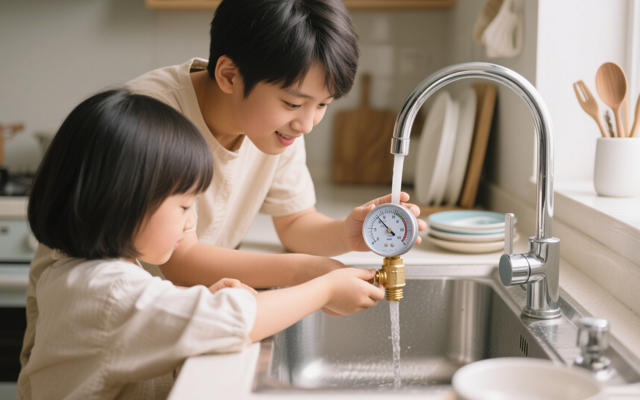
1. Check Multiple Fixtures
Test water pressure at different faucets, showers, and appliances (e.g., kitchen sink, bathroom sink, outdoor hose).
If only one fixture has low pressure, the problem is likely localized (clogged aerator, faulty valve, or pipe issue).
If all fixtures have low pressure, the issue is systemic (main supply, pressure regulator, or water heater).
2. Inspect the Aerator or Showerhead
Unscrew the faucet aerator or showerhead and check for mineral deposits, debris, or rust.
Soak it in vinegar overnight to dissolve buildup, then rinse and reattach.
3. Check the Main Shutoff Valve
Locate the main water shutoff valve (usually near the water meter or where the main line enters the house).
Ensure it’s fully open (turn clockwise to close, counterclockwise to open).
1. Activated Carbon Filters
- Removes:
✅ Chlorine & chloramines
✅ Bad tastes & odors (e.g., sulfur)
✅ Volatile Organic Compounds (VOCs)
✅ Some pesticides & herbicides
❌ Does not remove heavy metals, dissolved minerals, or microbes
2. Reverse Osmosis (RO) Systems
- Removes:
✅ Heavy metals (lead, arsenic, mercury, cadmium)
✅ Dissolved salts (fluoride, nitrates, sulfates)
✅ Microplastics & sediment
✅ Bacteria & viruses (if combined with UV)
✅ Chlorine & chemicals (with carbon pre-filter)
❌ May remove beneficial minerals (can be remineralized)
3. Water Softeners (Ion Exchange)
- Targets:
✅ Calcium & magnesium (hardness)
✅ Low levels of iron & manganese
❌ Does not remove bacteria, chlorine, or heavy metals
4. UV Purifiers
- Kills:
✅ Bacteria (E. coli, coliform)
✅ Viruses (rotavirus, hepatitis)
✅ Protozoa (Giardia, Cryptosporidium)
❌ Does not remove chemicals, metals, or sediment
5. Sediment Filters
- Removes:
✅ Sand, rust, dirt
✅ Large particles & silt
❌ Does not remove dissolved contaminants
6. Whole-House Filtration Systems
Combines multiple methods (carbon + sediment + UV) for broad protection.
- UV: Kills bacteria/viruses but doesn’t remove chemicals or particles.
- RO (Reverse Osmosis): Removes 95–99% of contaminants (heavy metals, dissolved salts) but requires electricity.
- Activated Carbon: Absorbs chlorine, odors, and organic compounds—ideal for pre-filtration.
REQUEST A QUOTE
RELATED PRODUCTS
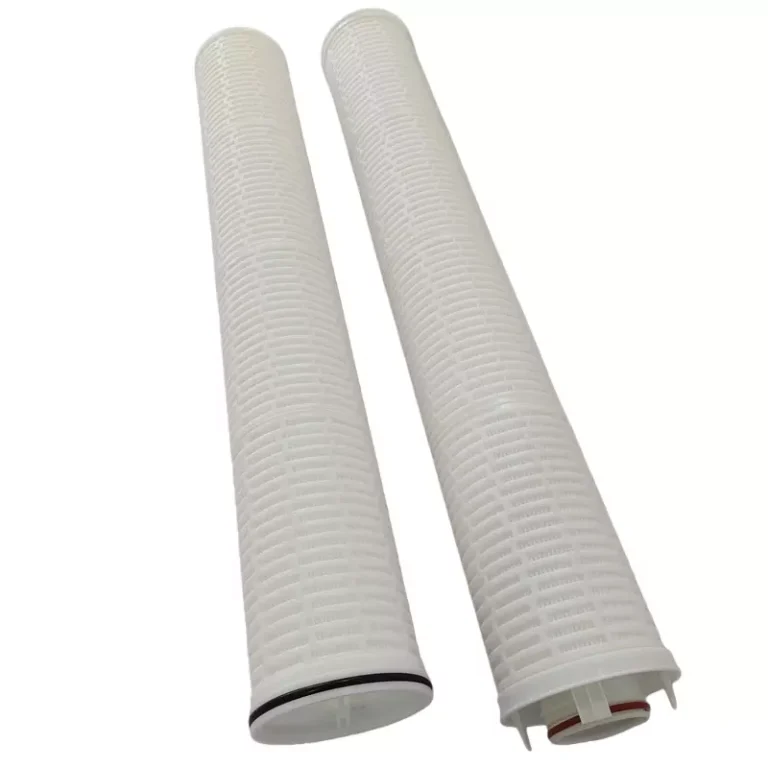
High Flow Filter Cartridge | BasideWT
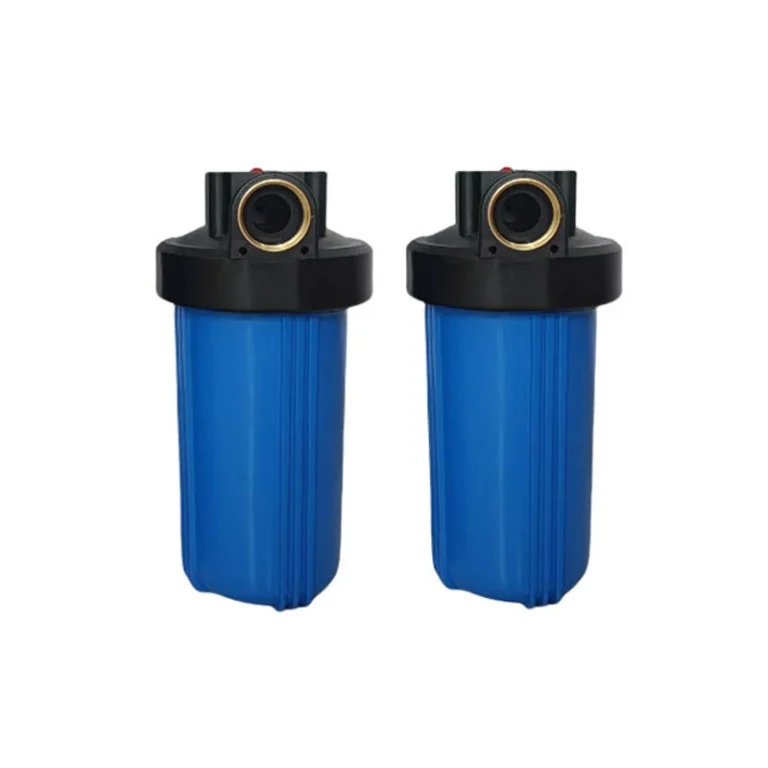
Whole House Sediment Water Filter Housing Blue Color – Fit for 4.5″ x 10″ Filters – NPT Brass Port 1″ 1.5” Inlet/Outlet (BB-10B)

BasideWT Factory Price 20 in. x 2.5 in. Water Filter Replacement Cartridges Whole House Pre Filter
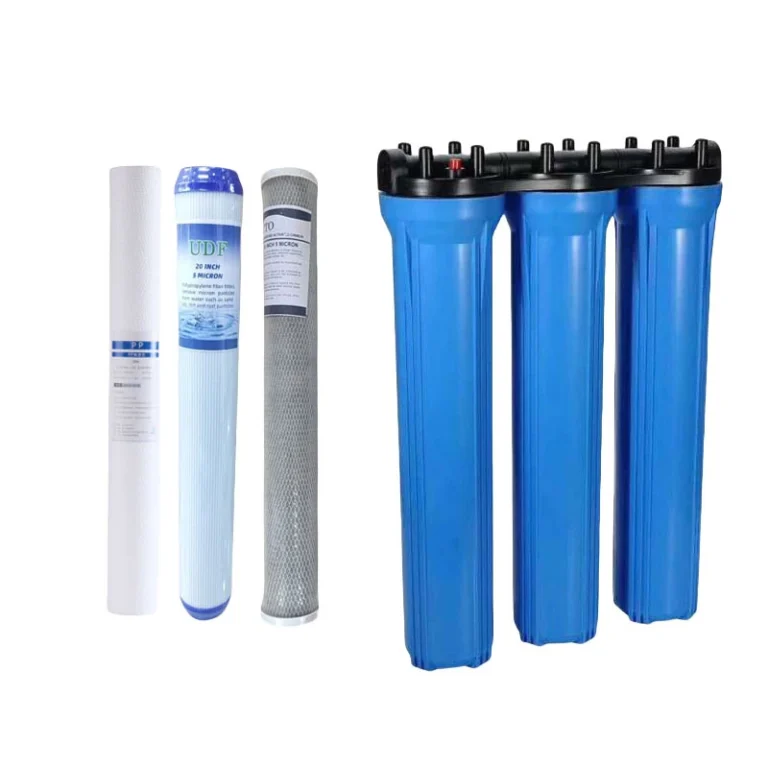
20 x 2.5 Whole House 3 Stage Water Filtration System with 5 Micron 20” x 2.5” Sediment PP, Carbon Water Filter
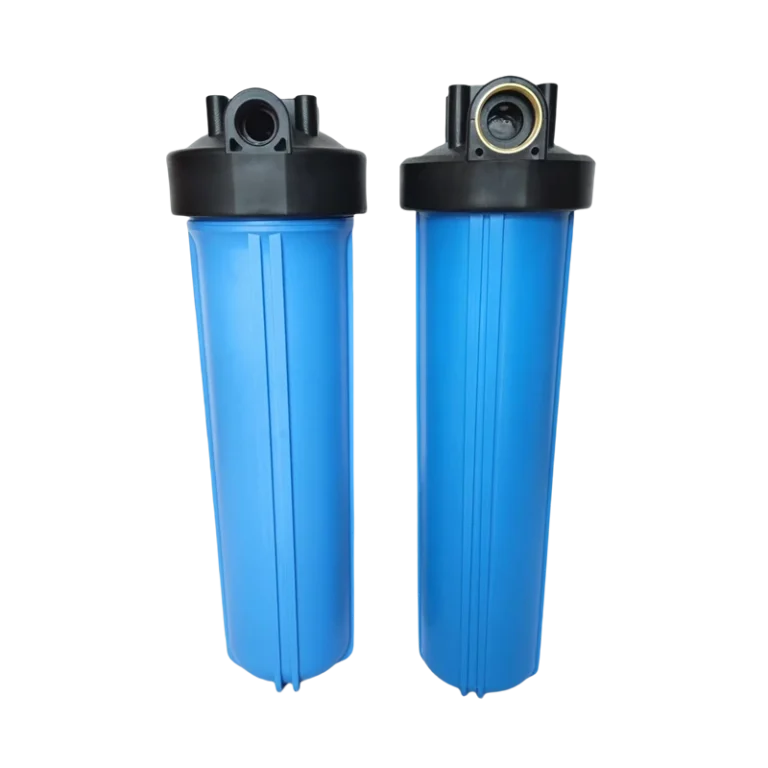
BasideWT Whole House Water Filter Housing Blue Color – Fit for 4.5″ x 20″ Filters – NPT Brass Port 1″ 1.5″Inlet/Outlet 20BB
